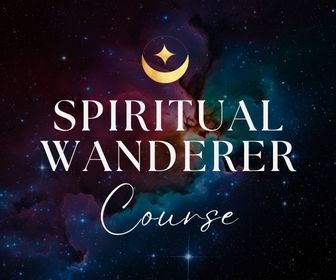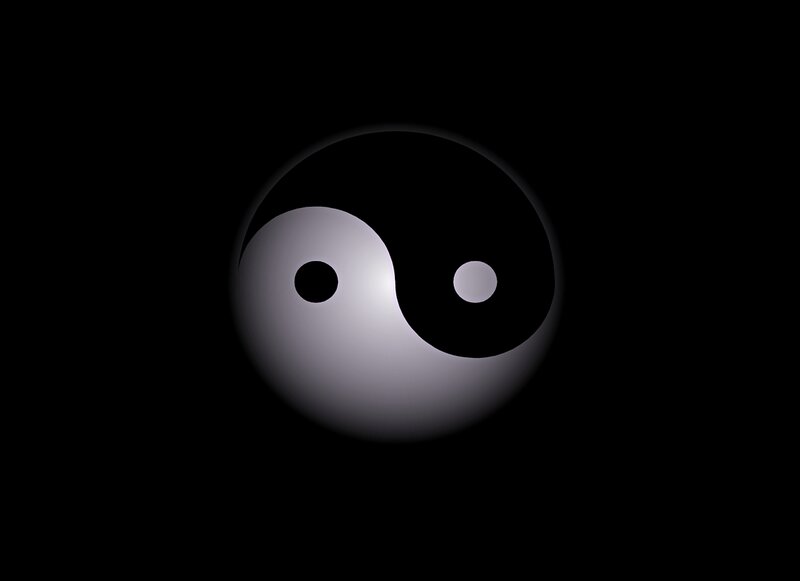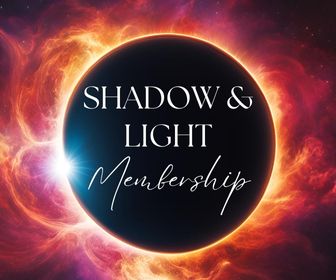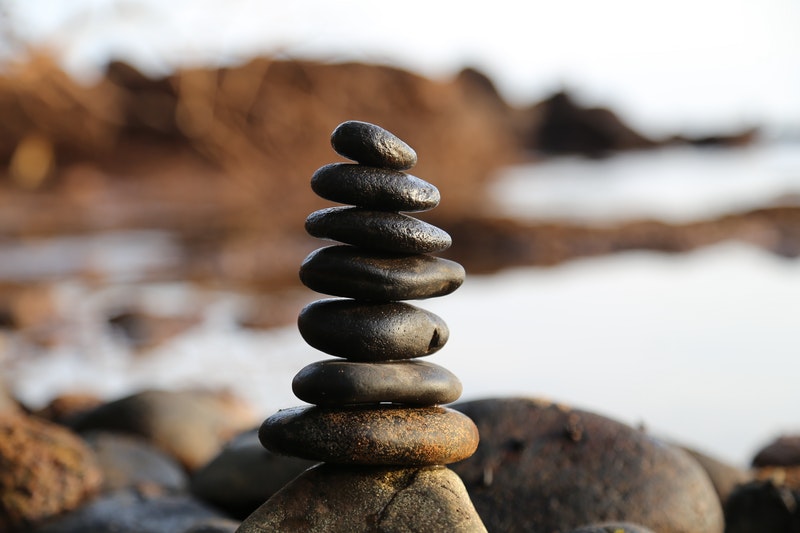We must all integrate our lessons, discoveries, and insights sooner or later. If we don’t, they merely remain mental or cerebral.
Don’t get me wrong: having amazing and cosmic epiphanies is an orgasmic experience. But these realizations will amount to nothing if you don’t integrate what you’ve learned.
My goal is to help you understand a little better what spiritual integration means (and how to experience it) in this article.

Spiritual Wanderer Course:
Being a lone wolf and a spiritual wanderer is a sacred calling in life – a unique and alchemical path of awakening. You don’t need to feel lost, alone, or stuck on your journey any more. It’s time to meet your soul’s deep needs for clarity, self-acceptance, and empowerment. Let us show you how …
Table of contents
What is Spiritual Integration?

In the context of the spiritual journey, spiritual integration is about living the discoveries and gifts you’ve attained, rather than just thinking about them. It’s easy to be philosophical and think deep thoughts, but to embody what you’ve realized is a whole other matter. Therefore, in essence, spiritual integration is a movement from the head to the heart and from conceptual to practical. It is self-actualization. Instead of just talking, reading, and hearing about a certain topic, you become it and unify it with your daily life.
Psychotherapist Robert A. Johnson defines integration in another way:
To integrate a mental state is to successfully ‘absorb’ it, meaning, you can now move on to other matters without suffering the energy drain that comes from ‘unfinished business’.
In this sense, integration helps us to mentally “complete” our discoveries so that they’re no longer a source of fixation. This is yet another benefit of integration: it clears space in our minds, allowing new, and deeper discoveries to emerge.
Examples of Spiritual Integration

To help illustrate spiritual integration more deeply, here are some examples:
- Integrating your humanity with your divinity (actively embracing both sides of yourself, the sacred wild)
- Integrating your masculine and feminine side (the yin and yang or anima and animus together)
- Integrating your mental understanding of compassion with a lived experience of compassion
- Integrating your desire to let go with actually practicing letting go
- Integrating your meditation practice with an embodied meditative approach to life
The above examples are by no means exhaustive. But I hope you get the picture! (And if you think I’ve missed any, feel free to share your own examples of spiritual integration in the comments section below this article.)
5 Simple Spiritual Integration Techniques

‘Spiritual integration’ can sound intimidating or complex. But it doesn’t have to be. Trusting that Life will guide us in the right direction, we’ll naturally integrate our discoveries anyway with time. Remember, there’s no rush!
But if you’re wanting to take a proactive approach, here are some simple spiritual integration techniques you might like to explore:

Shadow & Light Membership:
⭐️⭐️⭐️⭐️⭐ "traight from the very first weekly email, this has been mind-blowingly powerful, the synchronicity and the on-vibe contents resonate uncannily with my soul’s current challenges."– Marie
1. Commit to a symbolic action daily
There’s a reason why rituals are ancient and timeless spiritual practices: they help us to integrate the deepest desires of the heart and soul. Saying a symbolic mantra, for instance, can open us up to wisdom. Meditating on a symbol (e.g., a yantra) can awaken us to new possibilities. Lighting a candle and prostrating ourselves can aid in the development of humility. There are so many symbolic actions out there which might include, for example:
- A sound
- An image
- An object
- A movement
- An activity
Reflect on what symbolic action might best suit you and the lesson you’re trying to integrate. Remember, you don’t need to be too ostentatious or elaborate, simplicity is often the best approach.
2. Journaling and contemplation
One of my favorite practices, journaling and contemplation help to integrate our discoveries and lessons through the simple act of writing. When done mindfully (aka. not rushed), writing helps us to enter a ‘no-mind’ or ‘flow state’ where deep states of realization can occur.
We begin by contemplating our discoveries and then record all that we’ve learned, including our feelings and emotional states. By engaging both the right (creative/non-verbal) and left (logical/verbal) side of the brain, integration can more easily occur. In other words, journaling can often lead to a unification of the mind and heart.
But a word of warning: there’s a difference between contemplative journaling and emotionally-venting journaling. Both practices are valid, but purging all your emotions on paper won’t as easily lead to spiritual integration as quiet and contemplative journaling (which is a form of Lectio Divina). So ensure that you’re in a neutral or thoughtful frame of mind beforehand.
Learn more about how to journal.
3. Zen and the art of purging clutter

Spiritual integration often demands that we remove, let go of, and purge that which is no longer aligned with our needs. By actively making space, we allow ourselves to live more purposefully and soulfully. Mind you, clutter is not just physical – it is also emotional, mental, and even metaphysical. Examples of clutter can include:
- Commitments that are unnecessary and/or time-consuming
- Relationships or connections that are misaligned or unhealthy
- Habits that are destructive or pointless
- Interests or philosophies that no longer support our growth/well-being
- Physical objects or possessions that are not needed anymore
I’m sure I’ve missed out something, but you get the picture!
Making space is an act of commitment to our discovery/realization, allowing it to take root deeper in our lives and integrate more fully.
4. Meditative visualization
Of course, if you really feel called to do so, you can enter a meditative state and visualize the process of spiritual integration. Doing so can potentially help you accelerate deeper embodiment. (But keep in mind that if your visualization isn’t aligned with the Tao, or the current movement of life/energy, it won’t be effective.)
Would you like to save this?
Your information will never be shared.
To ensure that your meditative visualization is effective, ensure that you’re in a grounded and calm state. There’s no need to rush or force growth. But if you genuinely feel at a core level that you need an extra ‘push,’ this is a wonderful technique for you.
Some simple examples of visualization to facilitate your spiritual integration are the following:
- Visualize all multi-colored ‘pieces’ of your inner being coming together and forming a rainbow-colored circle (which represents integration/wholeness/oneness)
- Visualize, on your in-breath, the white light of clarity filling your body, and on the out-breath, the grey light of ignorance being dispelled from your body
- Press a hand to your forehead and visualize all your understanding being absorbed or sucked into your hand. Then bring that same hand down to your chest, pressing it against your heart – visualize all this understanding dissolving back into your heart.
You can also create your own visualizations, crafting any that intuitively resonate with you. Feel free to get creative or search the internet if you need more inspiration.
5. Create a piece of art
You don’t need to be an artist to create a piece of art. Art is an expression from the soul – and for this purpose, it doesn’t matter if it’s aesthetically pleasing or not.
Creation, which is ruled by the element of fire (which is responsible for transformation), is a powerful way of integrating your spiritual lessons, gifts, and insights.
By invoking this primal life force energy and channeling it in the direction you wish, you are engaging in a proactive practice of integration. Not only will your mind be engaged, but so will your heart and your senses. Creation is one of the few practices out there that incorporates every aspect of your being, and thus, it is a wonderful spiritual integration technique.
When creating your piece of art, ensure that you first have a strong intention in mind. Without a clear purpose for your art, it won’t be beneficial or effective. Some examples of strong intentions include creating art that helps you to experience inner peace, creating art that aids you in forgiving, creating art that empowers you to live more purposefully, and so on.
What art materials should you use? That’s totally up to you. Tune into what you resonate with or simply like – that might be doing something as ‘juvenile’ as a finger painting or as elaborate as a sculpture. It’s your choice!
***
Integration is a crucial part of the spiritual awakening journey and embodying your True Nature. But remember that it doesn’t need to be artificially triggered or forced. You can’t ‘achieve’ it – keep in mind that it is a natural and organic movement of Life itself. However, sometimes we are called to actively participate in our spiritual integration process. And I hope this article has helped you to do just that!
Do you have anything to share about the topic of integration that you think others should know? Feel free to share in the comments below!
Whenever you feel the call, there are 3 ways I can help you:
1. The Spiritual Wanderer Course: Need "big picture" direction, clarity, and focus? Our Spiritual Wanderer course is a crystallization of 10+ years of inner work, and it can help you find your deeper path and purpose in life as a spiritual wanderer. You get 3+ hours of audio-visual content, workbooks, meditations, a premium test, and more!.
2. Shadow & Light Membership: Want weekly intuitive guidance to support you on your awakening path? This affordable membership can help you to befriend your dark side, rediscover more self-love, and reclaim inner wholeness.
3. The Alchemical Soul Work Workbook: This powerful psychospiritual tool helps you turn inner blockages into breakthroughs using the ancient wisdom of spiritual alchemy. Through guided prompts and deep self-reflection, you’ll gain clarity, dissolve emotional pain, and reconnect with your Soul’s wisdom. Transform confusion into clarity. Live a more authentic, ensouled life.







For number 3, on the art of purging clutter, I just recommend people research into minimalism in general. Maybe not as much on Loner Wolf, where it’s not the main focus or specialization on the website, but just one out of many diverse spiritual topics. . . but maybe search online specifically for minimalism blogs, minimalism websites, minimalism podcasts, or minimalism books in general, by just looking up those terms I recommended to you now. Just know that minimalism doesn’t require you to abandon all your things, and to just live as a monk with no material belongings to you at all. It just means taking away what you consider less important in your life, and keeping what you consider more important. On a whole, that is a subjective thing, based on what you find important. Say if you prefer living on a luxury apartment, good for you, but you might want to remove clutter, not physical clutter, but all the extra responsibilities at work and abusive people you spend too much time with, you might want to work around. It’s just that. . . we have this idea that improving means we add more of something, but sometimes growing as a person is learning to have less of something. That’s minimalism. Not just minimalism in the sense of having less material belongings, but hey that’s part of it too, if you consider that your expression of minimalism. Of course, this is just one spiritual path out of many, but perhaps consider it if you want, at least. Even if you keep most of your clutter because you feel it’s important to you and only remove the ones you feel the most burdens on the most, that’s still a big change. It’s okay to keep a lot of things out of sentimental reasons. It’s a valid reason to just keep something for emotional reasons, not necessarily logical ones, it’s just. . . you get to consider if you really want to keep something or not.
Beautifully put Aletheia, thank you :)!
This was very helpful and allowed me to go deeper in the spirit realm. The revelations that this opened up for me is amazing. Thank you for sharing the revelations that was entrusted to you. This was just what I was searching for. So many things make sense now after reading this.
I’m still having a very difficult time understanding what a daily symbolic action is, I need an example of one, but also, does what you choose have to be of huge importance? Or only has meaning to me?
Hi, Teagan. I understand why you might feel confused on this one. I thought the same thing when I read it; and then, all the sudden, I realized I’ve already been doing this for years. I have a strong faith in the Orishas, and I dedicate one day of the week to each one. Essentially, each rules over certain areas and aspects of human life; so when we struggle in those areas or just want to be “better” in them, you call on that particular Orisha and for their wisdom and guidance. I also am super big on candle burning. I burn every single day. Sometimes two or three times a day. Colors carry their own meanings and vibrations, and burning with intent and positive affirmations has changed my life tremendously. I don’t tell you all of this to sway your thinking to my style of doing things, but only as an example of what my daily symbolic action is. Each morning I grab my little chalkboard, write out my intent, my affirmations, what I ask of the Orisha that guides in that area and grab a candle color that also vibes along the same ideas. I say a little prayer to God, Orisha and speak my intent, light the candle and go on with my day. This is maybe 15 minutes of my morning, but over the years I have really learned how significant of an impact this little act has made in my life. So, I think the point of a symbolic act is anything that works for you, anything that keeps you grounded in your path and helps you to live your truths. I hope this helps.
Thank you Aimee for helping Teagan understand the ‘symbolic action’ part more, I think what you’ve described is a beautiful example. Aimee, you might also be inspired by my ritual article: https://lonerwolf.com/types-of-rituals/ I hope that helps ♡